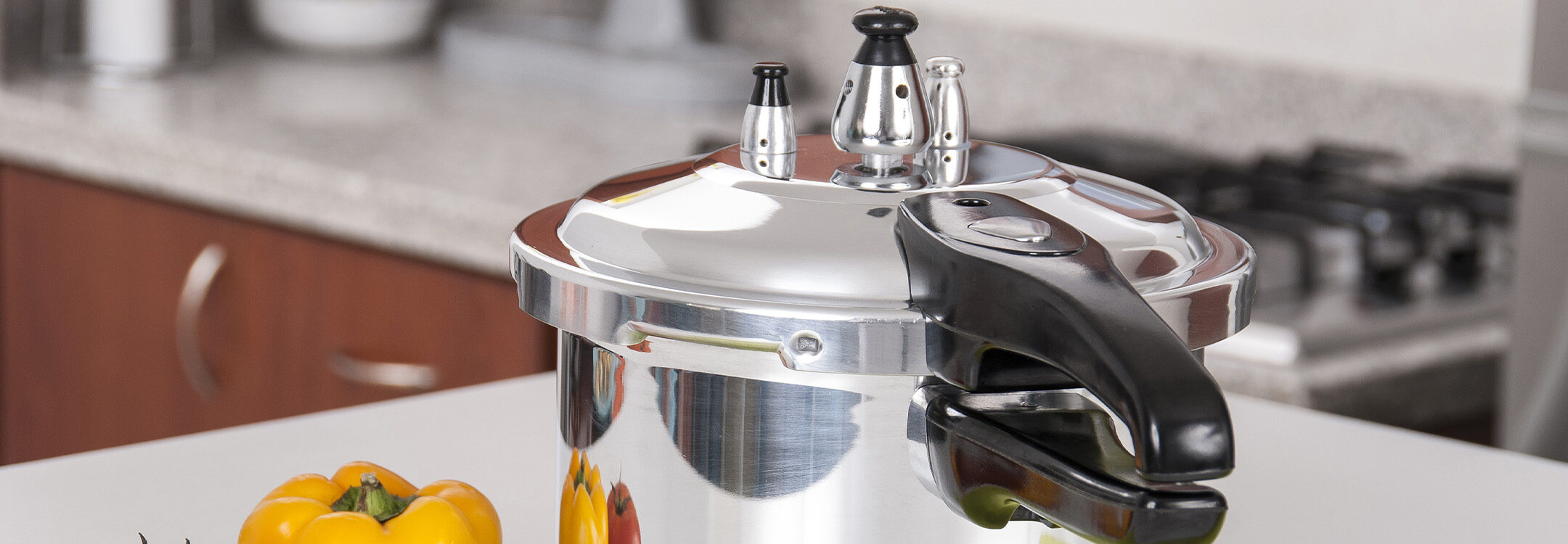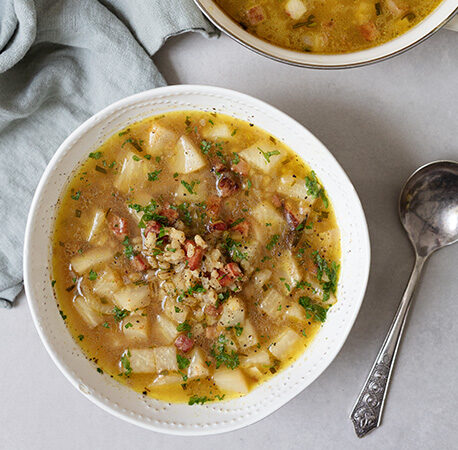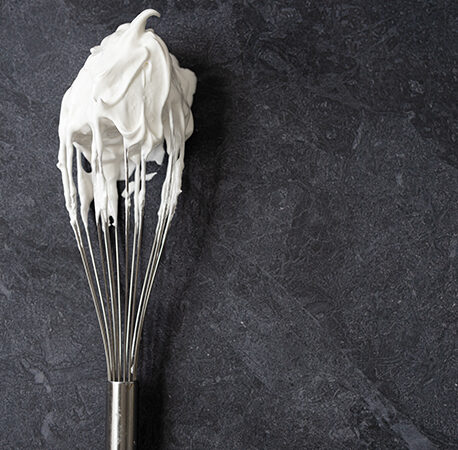What is a pressure cooker?
A pressure cooker works on the principle of steam pressure. A sealed pot with water inside builds up intense pressure as the water is converted to steam, helping food to cook faster. A Frenchman named Denis Papin invented the pressure cooker in the 1600s, but it took many years before advancements in technology could render these high pressure pots safe for home use.
How does a pressure cooker work?
A pressure cooker is a sealed pot with a valve for controlling the steam pressure inside. As the pot heats up, the liquid inside forms steam, which raises the pressure in the pot. This high pressure steam has two major effects:
- It raises the boiling point. When cooking something wet, like a stew or steamed vegetables, the heat of your cooking is limited to the boiling point of water (100˚C). However, with the added pressure from the steam, a pressure cooker can increase the boiling point to as high as 120˚C, helping the food to cook faster.
- It raises the pressure, forcing liquid into the food. Again, this helps it to cook faster, in addition to helping certain foods – such as tougher cuts of meat – to get very tender very quickly.
The extra-high heat of the pressure cooker even promotes browning and its associated deep, caramelised flavours, which is quite unexpected as we’re not used to food browning when cooked solely in a liquid. This means that the flavours created in a pressure cooker can be just as complex as those created via traditional methods.
What can you cook in the pressure cooker?
Almost anything! It cooks rice in just a few minutes, and it can have legumes like dried beans ready in around 15 minutes (although they will still require overnight soaking beforehand). It is particularly useful for foods that need to be tenderised, such as cheaper cuts of meats. Worldwide, pressure cookers are used most frequently for beans, pulses, stews and vegetables.
What are the pros and cons?
First, the negatives. This is a whole new way of cooking, with its own rules, processes and language, so it can take some getting used to. Because it’s sealed, you can’t touch or taste the food while it cooks, and it really requires a new way of thinking about meal preparation.
Like many other optional kitchen appliances, such as slow cookers or juicers, it may not be appropriate for kitchens with limited space.
On the plus side, a pressure cooker is highly efficient, as it cooks so quickly and leverages the pressure powers of steam. This means it uses far less energy than most other appliances.
It also drastically cuts down on cooking time. Pauline, one of our Food Stylists, tested a risotto recipe in a pressure cooker recently and it took just 10 minutes, with no constant stirring required.
The verdict? It’s – of course – up to you, but there’s plenty of reasons to invest in a pressure cooker. If you do get one, we highly advise a thorough read of the user manual before you start cooking, as learning to cook with your new gadget will take some adjustment.
- gut health
- healthy
- top tips
- fridge cake
- food festival
- me auld flower
- dublin
- dublin festival
- food and drink festival
- festival line-up
- Summer festival
- Events
- Festivals Ireland
- Body & Soul
- music festival
- summer events
- OATLY
- Crudo
- All Together Now
- Events Waterford
- Events Ireland
- news
- events Dublin
- Home-Cooking
- online cooking course
- cooking






You have to be signed in to comment this post.